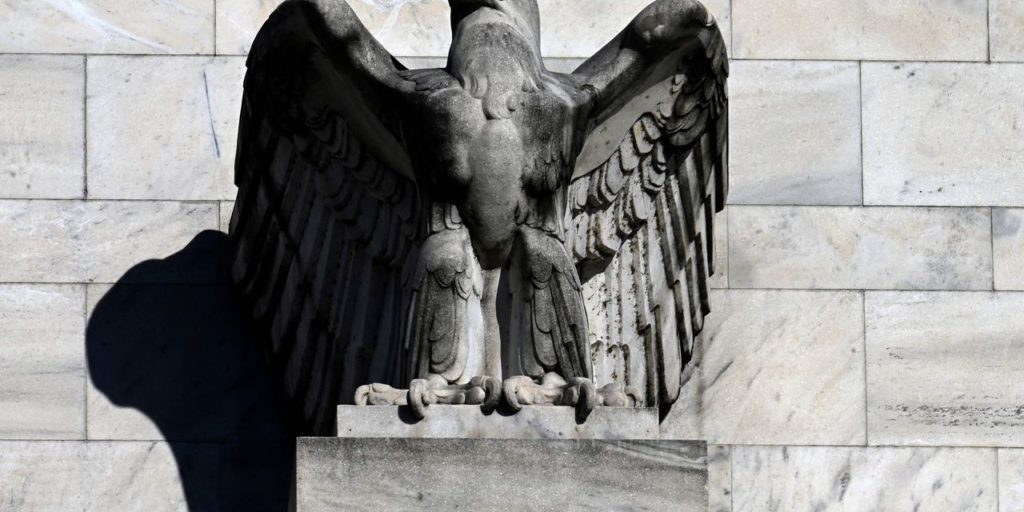Just as Federal Reserve policy makers gear up for a likely series of interest rate hikes starting in March, the Treasury market is warning that there may be limits around how far policy makers can go without triggering fears of an impending recession.
A day after the Fed’s policy update, the widely followed spread between 2- and 10-year Treasury yields shrank to the narrowest level since November 2020, while the counterpart gap between 5- and 30-years flattened to a level not seen since January 2019, according to Tradeweb data as of 2 p.m. Eastern time Thursday. Parts of the government bond market also moved closer to inversion — such as the gap between 7- and 10-year Treasury rates.
While the likelihood of at least five rate hikes by year-end has risen to more than 50% as of Thursday, there’s a distinction between what the market expects the Fed to do and what the market thinks the Fed can do without harming economic growth.
Yield spreads that fall below zero are typically seen as a harbinger of an economic downturn. The last time the 2s10s spread went negative was in 2019. Months later, the U.S. economy fell into a two-month downturn that lasted from February 2020 to April of that year, driven by the onset of the COVID-19 pandemic.
“We’re not anywhere near a massive inversion, but to me the signal from the curve tends to be a very good indicator of where we are headed,” said Societe Generale’s Subadra Rajappa, head of U.S. rates strategy. “The flattening curve has to be a concern because it raises the question of just how much the Fed will be able to hike in order to bring down inflation, without signaling risks of a recession.”
Both the 2s10s and 5s30s spreads have already fallen sharply this year, even before the Fed has delivered its first rate hike. One big factor influencing the trajectory of long-term rates, and thus the flattening of the curve, is demand for Treasurys from overseas investors and domestic asset liability managers, Rajappa said.
Meanwhile, other corners of the Treasury market, such as the gap between 20-year and 30-year yields, remain inverted at a time when forecasters expect the economy to be slowing.
The median estimate of economists polled by the Wall Street Journal this month is for GDP growth to slow to 3.3% in 2022, down from more than 5% in 2021, and to continue slowing to 2.4% and 2.2% in 2023 and 2024, respectively. Economists at the American Bankers Association are also bracing for a U.S. slowdown over much of this year, while the International Monetary Fund has cut its forecast for global growth in 2022, to 4.4% from a previously expected 4.9%.
Read: Hidden in the GDP report is proof that the air is already coming out of the economy
For his part, Powell told reporters on Wednesday that many factors are influencing longer-term interest rates, and that the central bank does “monitor the slope of the yield curve, but we don’t control the slope of the yield curve.” “I don’t think of it as some kind of an iron law,” he said. “But we do look at it and try to understand the implications and what it’s telling us. And it’s one of many things that we monitor.”
During Powell’s prepared remarks on Wednesday, the bond market began to price in higher inflation expectations, as reflected in the 10-year TIPS breakeven rate, on the view that the Fed would be adopting “a more measured approach” to removing accommodation than previously thought, Rajappa said. But as Powell’s comments turned decidedly more hawkish during the question-and-answer session, the market walked back, leaving expectations at roughly where they were before Wednesday, she said.
On Thursday, most Treasury yields turned lower, except for the 1- and 2-year rates
, which rose by 15 and 12 basis points, respectively, to 0.73% and 1.19%. The 10-
and 30-year yields
each fell, as major stock indexes were mixed.
Sign up for our Market Watch Newsletters here
Source: Marketwatch


